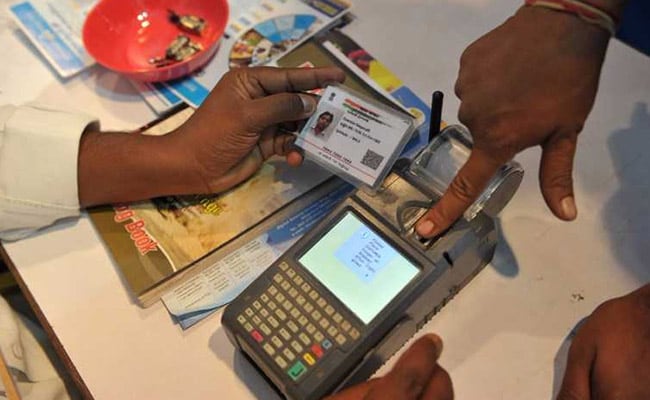New Delhi: In a path-breaking decision, the Supreme Court on Thursday held that privacy is a fundamental right under the Constitution of India.
However, like all other fundamental rights, it is not absolute.
Apart from setting a new benchmark for Indian democracy and clearing all ambiguity on privacy, the historic judgement by the apex court has set the stage for the introduction of a new privacy law by the government.
At the same time, by linking privacy with human dignity and preservation of personal intimacies, the apex court has laid the legal ground for a fresh interpretation of controversial issues such as decriminalization of homosexuality.
While the fate of Aadhaar—to be heard as a separate case by a three-judge bench of the Supreme Court—is undecided, the privacy judgement provides room for its accommodation. It has done so by defining exceptional circumstances wherein personal liberty can be transgressed.
Acknowledging the pervasion of technology, the apex court identified privacy of information as a subset of the right to privacy. And in this, it said that the privacy of information can be threatened by both state and non-state actors—by implication, social media platforms could potentially come under the purview of the new interpretation of privacy.
Delivering the unanimous verdict of the nine-judge bench on the penultimate day of his tenure, Chief Justice J.S. Khehar said: “Privacy is intrinsic to the right to life and personal liberty under Article 21 of the Constitution and an inherent part of fundamental freedom under part III of the Constitution.”
Any encroachment to privacy will have to subscribe to the “touchstone of permissible restrictions”, the bench said. Consequently, invasion of privacy will have to be justified against the standard of a “fair, just and reasonable” procedure.
Separately, the apex court acknowledged the central government’s move to draft a data protection legislation and the appointment of an expert group headed by former Supreme Court judge B.N. Srikrishna.
The Supreme Court added that such a data protection regime should carefully balance the trade-off between individual interests and legitimate concerns of the state.
With this ruling, the right to privacy will now find place under part III of the Constitution along with other fundamental rights.
The court in its verdict also overruled earlier judgements of M.P Sharma vs Satish Chandra (1954) and Kharak Singh vs State of Uttar Pradesh (1962) that had held privacy to not be a fundamental right.
“The government stands by the principles enunciated by Supreme Court in today’s privacy judgement,” said law minister, Ravi Shankar Prasad, welcoming the ruling. The opposition parties were also quick to do so.
Offering an expansive meaning to privacy, a judgement co-authored by justices D.Y. Chandrachud, J.S. Khehar, R.L. Agrawal and S. Abdul Nazeer held that privacy in its core includes the “preservation of personal intimacies, the sanctity of family life, marriage, procreation, the home and sexual orientation”.
“The judgement hasn’t fundamentally shifted anything but an explicit ruling has put privacy on a surer footing now. However, the judgement has established horizontal applicability. The right to privacy is now applicable against the state as well as against the private companies who possess large amounts of user data without consent or nominal consent of users,” said Pranesh Prakash, policy director at the Centre for Internet and Society, a Bengaluru-based think tank.
Justice Chelameswar has included a woman’s freedom of choice to bear a child or abort the pregnancy, freedom to choose to work or not and the right to travel freely as falling within the right to privacy.
The 547-page ruling also holds that the extent of state surveillance will have to be tested against the set standard while balancing individual and state interests.
The limited question—if the right to privacy is a fundamental right—had cropped up in the context of legal challenges to the collection of data for Aadhaar, which has now become the bedrock of government welfare programmes, the tax administration network and online financial transactions
The constitution bench was set up on 18 July and heard arguments over three days each week by lawyers for the central government, states and petitioners who contended that the collection of personal details under Aadhaar infringed on the right to privacy.
Arguments were opened by lawyer Gopal Subramanium, arguing in favour of a privacy law, as he urged the court to view privacy not as a shade of a fundamental right but as one that was “inalienable and quintessential to the construction of the Constitution”.
Privacy was sought to be defined by Shyam Divan, counsel for one of the petitioners, who said that it would include bodily integrity, personal autonomy, protection from state surveillance and freedom of dissent, movement, and thought.
On 26 July, as the centre began its arguments, it recalibrated its stand on privacy and conceded for the first time that privacy was a fundamental right under the Constitution—with the caveat that the right could not be extended to “every aspect” of privacy.
Attorney general K.K. Venugopal had submitted that privacy was at best a “sub-species of liberty and every aspect could not qualify as being fundamental in nature”.
with thanks : LiveMint :
LINK










